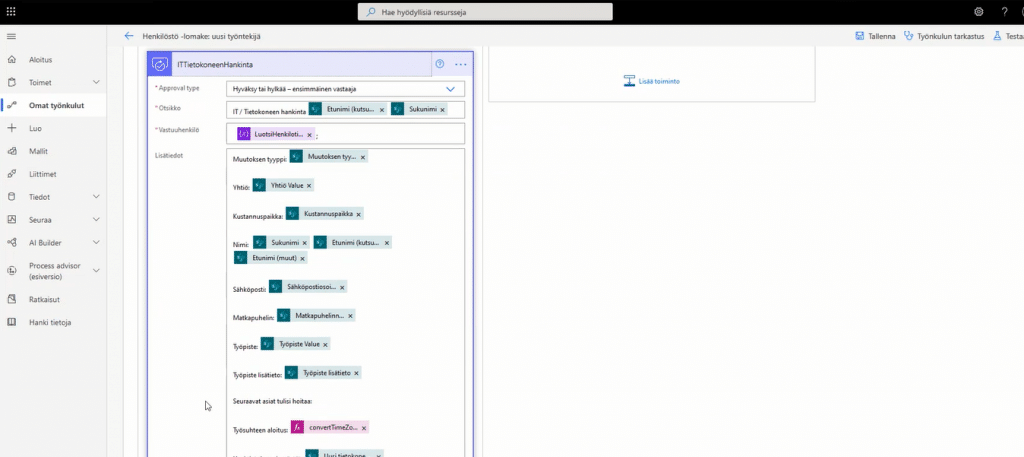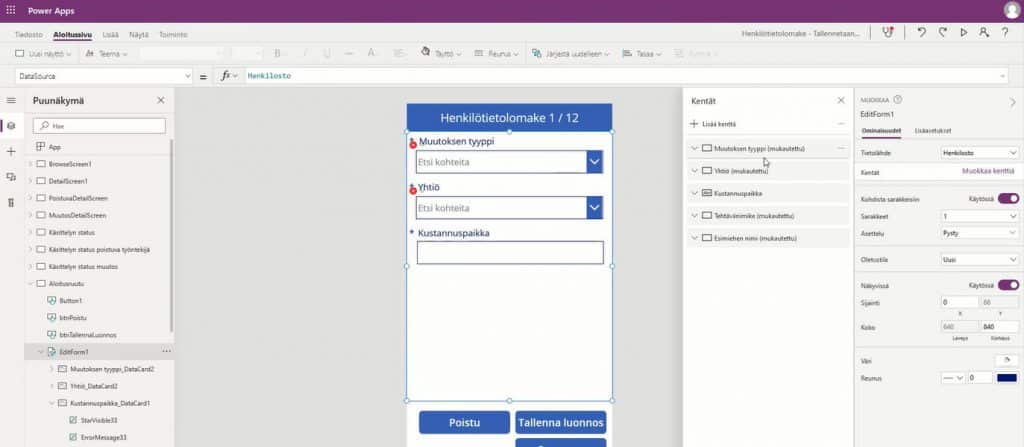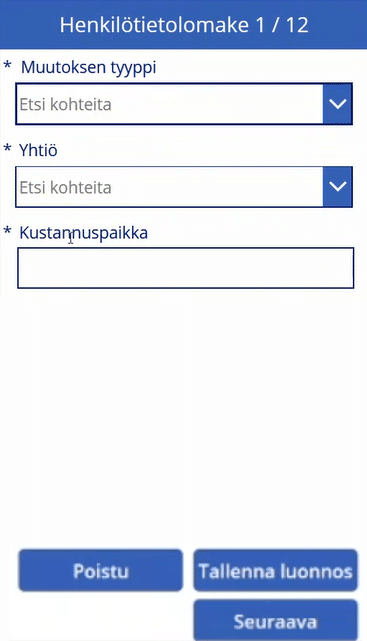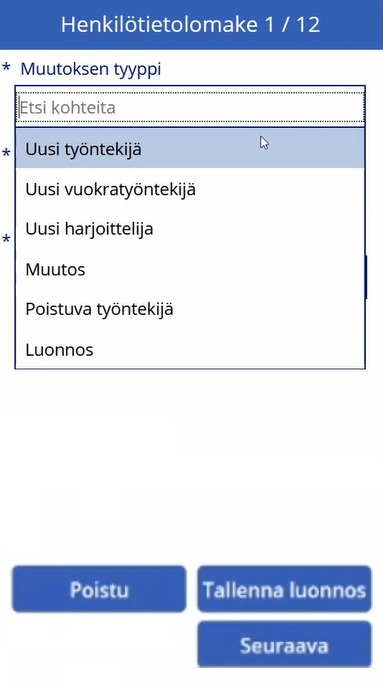Microsoft Power Platform offer tools for developing applications that support the digitization of an organization in several processes, such as sales quotation and contract management, operational quality control and development, and virtual innovation.
Solutions built with Power Platform’s tools also streamline and simplify human resource management processes. For example, in a group of companies, the solution centralizes the purchase requests of all subsidiaries and their different locations and departments in one and the same process.
Among other things, the processes related to a new or changing employee, from the ordering of tools, permissions, and access rights to applying for a corporate credit card, are such. The solution digitizes many manual processes, streamlining and speeding up the HR process considerably.
It is about making everyday life easier for users such as information workers, by reducing the amount of repetitive manual tasks such as retrieving, storing, and processing data in different information systems and, for example, in Excel spreadsheets. This is accomplished by combining automation in the background of a simple interface with Power Automate workflows.
Digitization of the HR process with the Power Platform
In streamlining the HR process, the solution is implemented so that the user fills in the information in a form for the required purchases. These include IT tools, office tools, site access, and access rights and user IDs for various information systems.
After filling out the form, the information is saved in SharePoint, where the workflow checks if a new item has been created in the list or an existing item has been modified. Next, Power Automate sends emails to people in charge of various procurement processes across the organization. They accept or reject requests for an employee’s resource purchases.
In group-level organizations, there may be many dozens of such people responsible for handling the requests, depending on the number of subsidiaries, locations, and different departments. The more of these variables, the wider the scale of workflows.
When people accept or reject purchase requests, the workflow automatically updates the information in SharePoint. All data processed by the application is stored and retrieved from SharePoint, so there is no need to modify the data itself in any way. Finally, information on the outcome of the processing of the requests will be communicated to the person filling in the form as the original author of the procurement requests.

Power Apps for fast and cost-effective application development
The structure of the HR form solution in the form of displays implemented with Power Apps is thus divided in multiple parts and there are several dozen Power Automate workflows for various procurement-related processes, which contain up to hundreds of data fields.
If a similar HR form were done with traditional web development, it would take a lot of time to create the interface. With Power Apps, you can easily make the interface by selecting a data source, such as bringing a specific row in a list to the screen that appears. In this case, Power Apps retrieves all possible information about those fields on the form without the need to perform any REST and database queries for data processing.
As the basic functionalities of simple functions are developed, the processing of appearance aspects is significantly reduced in time. When Power Apps produces data for the application screen, the developer needs to make small visual changes. In addition to that, of course, some actions are taken if, for example, you want to display additional fields at some point as the form filling progresses to later stages.

Microsoft technologies offer an agile and fast way to develop applications to digitize processes and streamline the daily lives of employees. Thus, when compared to traditional web application development, the benefits are significant in both time and money.
Agile application development starts with planning
Despite the benefits that materialize in daily work, as with all other projects, the saying “well-planned is half-done” also applies to agile application development enabled by the Power Platform.
A good starting point for defining and identifying the processes to be digitized is a systematic overall picture: what the application development project wants to achieve, what needs the solution must meet and what successful application development requires from the organization and the coder responsible for building the solution.
In practice, a big picture of the solution to be implemented should be designed with a simple wireframe model, such as what screens and basic functions are needed in a form-based mobile application, for example. As you move from the big picture, it is more natural to refine the solution description into smaller parts per single screen of the application.
Principles of agile application development
With a clear template, it is easy to start outlining all the necessary SharePoint lists, database tables, and other data sources. Defining these clarifies the design of the logic of the Power Automate workflows running in the background of Power Apps applications.
Already at the design stage, it is good to keep in mind that both the application and the workflows that enable its automation should also be made to a suitable size. If they swell terribly large, performance problems can arise with the solution.
Implementing the application at many development stages, if necessary, also streamlines the process. Piloting the functionality of a solution with end users usually helps to identify potential needs and desires for further development. In this case, systematic documentation of the solution requirements and description prevents the repetition of the design and preparation phase, for example when the developer in charge of the application changes.
When the application is implemented and developed in a sufficiently planned way and the scale is kept to a reasonable size, then the Power Platform serves and works properly in a very cost-effective way to do different things.
Read more about our customer stories and solutions:
- A mobile app for salespeople on the go
- Deviation handling process from end-to-end
- An easy-to-use solution for contract management
- Digitizing the handling process of innovation initiatives
- Automating and leveraging data in business decision making in various industries
Juha Pihlajamäki
Developer










